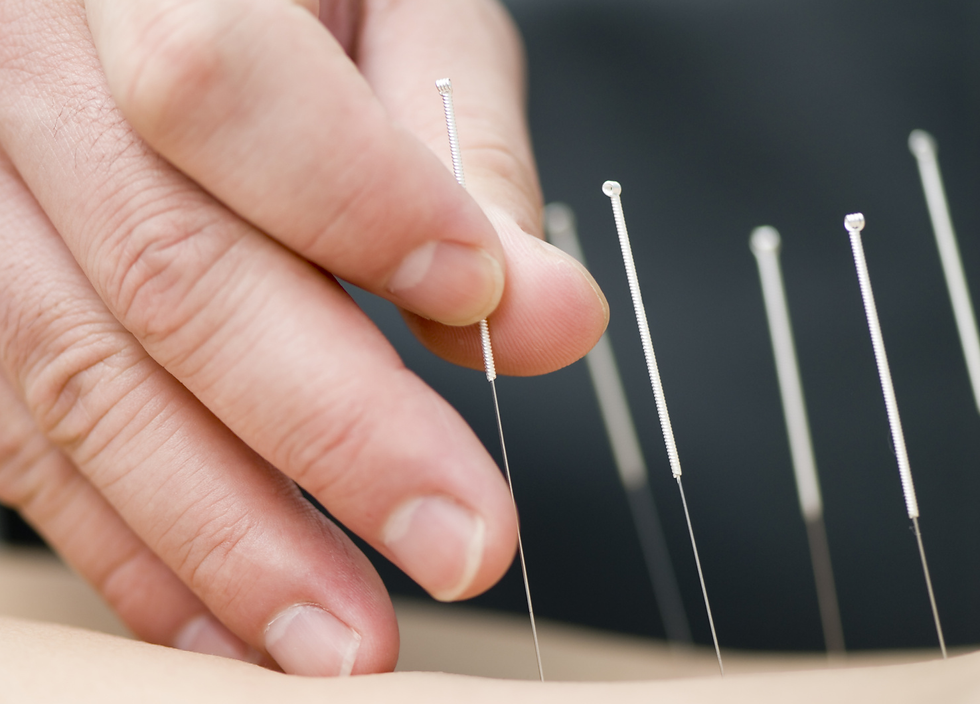
Dry needling has become a popular treatment technique with an increasing amount of evidence demonstrating its effectiveness in assisting physiotherapists treat musculoskeletal conditions. It is particularly effective when treating pain that is being referred from active and latent trigger points located within a muscle.
The technique of dry needling is often confused with Acupuncture. However, whilst these techniques both use the same tools the philosophy, application and procedures are significantly different. In the efforts of transparency I thought it would be worthwhile providing an overview of the differences between the two.

(Headache Trigger Point Referral from Upper Trapezius)
To begin with dry needling is practiced using a western medical base in approaching people’s musculoskeletal problems. In contrast, Acupuncture is practiced primarily from an eastern medical base in maintaining a “balanced state” of the body. This is achieved through an even flow of vital energy along pathways known as meridians. These pathways can occasionally become blocked which is then thought to cause illness. To maintain a “balanced state” an acupuncture practitioner will insert many needles into the skin layer where meridian points are located to clear these blockages allowing an even flow of vital energy to resume. These needles can then be left in for upwards of 10 minutes to ensure the blockages in vital energy flow are cleared.
Dry needling differs from Acupuncture as it targets active and latent trigger points within a muscle to achieve a localised twitch reflex to assist with muscle release, blood flow and reducing the activity of nerves that perceive pain. This process only involves a few needles which are inserted through skin layers and into the muscle to reach the desired trigger point. If a twitch in the muscle is not elicited a process known as fanning can be used which involves multiple advances of the needle into the muscle to cause a twitch reflex. In contrast to the long needle insertion times in acupuncture, once a twitch has been obtained the physiotherapist may only leave the needles in for 30 seconds to a couple of minutes.
If you are interested in reading more of the detail behind the pathophysiological process of dry needling feel free to look at the references at the bottom of this article.
As always I’m always happy to have more of a chat at the PhysioLogix Physiotherapy clinic located in North Perth if you would like to swing by.
Signing off!
Vincent Harvey
Physiotherapist
References
Cagnie, B,. Dewitte V,. Barbe, T., Timmermans, F., Delrue, N., & Meeus M. (2013). Physiologic effects of dry needling. Myofascial Pain, 17:349, P1-8

